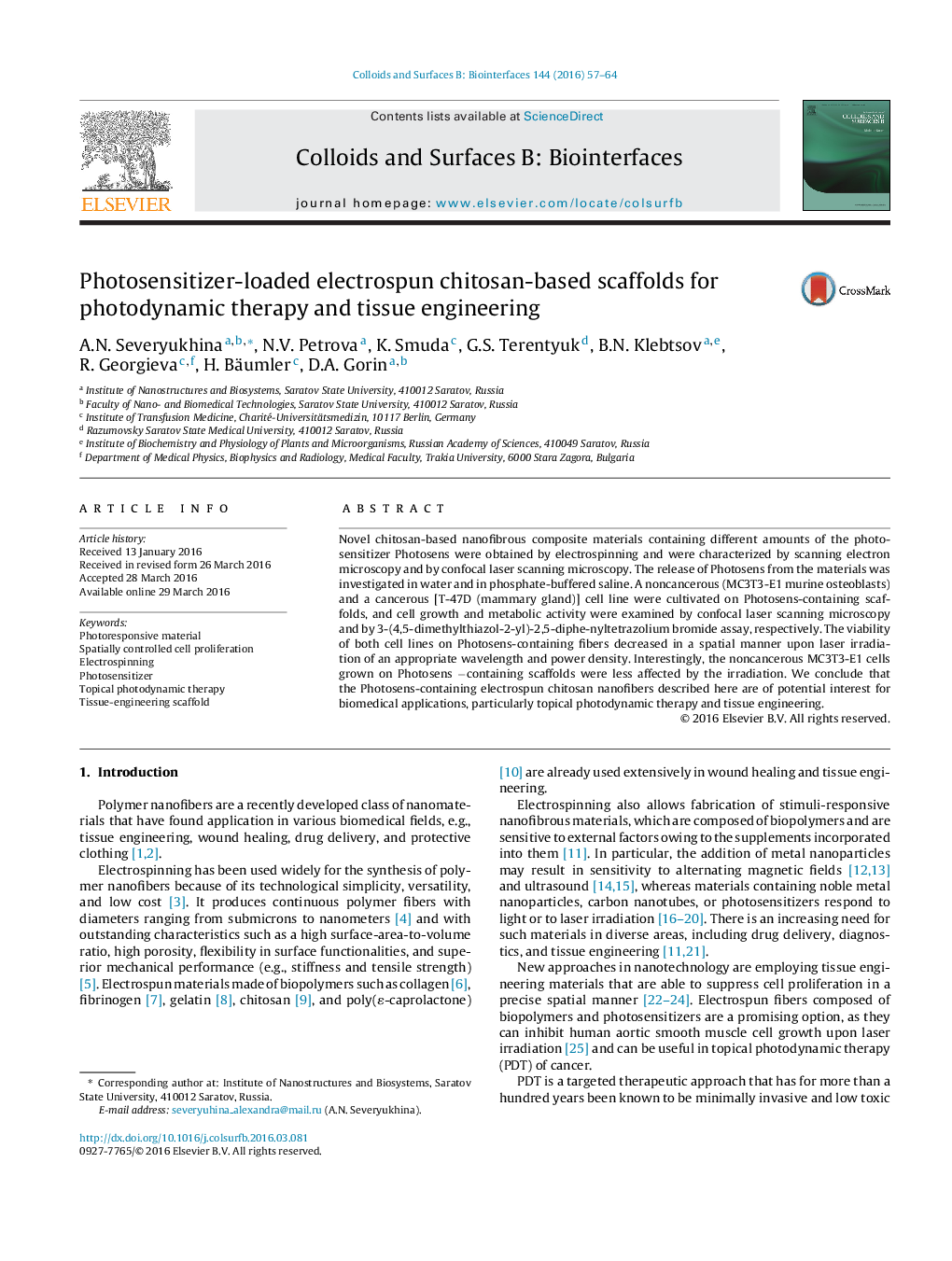| Article ID | Journal | Published Year | Pages | File Type |
|---|---|---|---|---|
| 598827 | Colloids and Surfaces B: Biointerfaces | 2016 | 8 Pages |
•Electrospun materials containing a second generation photosensitizer were prepared.•Release kinetics of PS from the materials was described by two different mechanisms.•Phototoxic effect of the materials was spatially limited to the irradiation area.•Cancer cells were more affected by phototoxic effect of the materials.
Novel chitosan-based nanofibrous composite materials containing different amounts of the photosensitizer Photosens were obtained by electrospinning and were characterized by scanning electron microscopy and by confocal laser scanning microscopy. The release of Photosens from the materials was investigated in water and in phosphate-buffered saline. A noncancerous (MC3T3-E1 murine osteoblasts) and a cancerous [T-47D (mammary gland)] cell line were cultivated on Photosens-containing scaffolds, and cell growth and metabolic activity were examined by confocal laser scanning microscopy and by 3-(4,5-dimethylthiazol-2-yl)-2,5-diphe-nyltetrazolium bromide assay, respectively. The viability of both cell lines on Photosens-containing fibers decreased in a spatial manner upon laser irradiation of an appropriate wavelength and power density. Interestingly, the noncancerous MC3T3-E1 cells grown on Photosens −containing scaffolds were less affected by the irradiation. We conclude that the Photosens-containing electrospun chitosan nanofibers described here are of potential interest for biomedical applications, particularly topical photodynamic therapy and tissue engineering.
Graphical abstractFigure optionsDownload full-size imageDownload as PowerPoint slide
